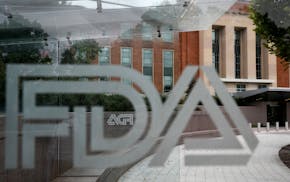"Boom Town," Sam Anderson, Crown, 432 pages, $28.
Sam Anderson first visited Oklahoma City in 2012 to report on its NBA franchise for the New York Times Magazine and calls it "unlikely, unreasonable, arbitrary." Despite the rhetoric, however, the writer has clearly discovered a subject that energizes him.
Anderson lays out its Sooner roots, how Oklahoma City and its original promise appear to strike him as a perpetual example of the soul-altering fantasies of a boom town, of the abiding and destructive American hunger for instant success amid the usual financial desperation.
To be fair, boom is almost always accompanied by its unfaithful spouse, bust. The oil business has alternately enriched and depleted the city, starting in 1928 and continuing right up to the present with the advent of fracking.
There are the supersonic booms that echoed through Oklahoma City in 1964 during Operation Bongo II, when the Chamber of Commerce volunteered the metropolis for a six-month experiment in how well its stoic citizenry could tolerate daily blasts from overhead jets in the forlorn hope that the city might become a hub for supersonic air travel. (Answer: not well.)
There is the depraved, cataclysmic boom from the 1995 bombing of the Alfred P. Murrah Federal Building. And in a metaphorical sense, there is the premature boom of Oklahoma City's relatively new NBA team, the Thunder.
Through the history of its economy, its politics and its most famous citizens, Anderson's brilliant book shows what's most surreal about Oklahoma City is that this city is for real.
NEW YORK TIMES
More from Star Tribune
More from Star Tribune
More from Star Tribune
More from Star Tribune
More from Star Tribune
More from Star Tribune
More from Star Tribune
More From Star Tribune
More From Business
Business

Remnants of bird flu virus found in pasteurized milk, FDA says
The U.S. Food and Drug Administration said Tuesday that samples of pasteurized milk had tested positive for remnants of the bird flu virus that has infected dairy cows.
Sports
Timberwolves dispute between Taylor and Lore, Rodriguez over ownership moves to mediation
The Minnesota Timberwolves ownership dispute is moving into mediation.
Business
Tesla 1Q profit falls 55%, but stock jumps as company moves to speed production of cheaper vehicles
Tesla's first-quarter net income plummeted 55%, but its stock price surged in after-hours trading Tuesday as the company said it would accelerate production of new, more affordable vehicles.
Business
Montana minor league baseball team in dispute with National Park Service over arrowhead logo
A minor league baseball team in Montana is calling out the U.S. Department of Interior for ''unwarranted and relentless'' trademark claims in a battle over the use of an arrowhead logo.
Business

The head of Mexico's detective service says his country is the 'champion' of fentanyl production
The head of Mexico's detective service acknowledged Tuesday that the country is ''the champion'' of fentanyl production, something that appears to run counter to past statements by President Andrés Manuel López Obrador.